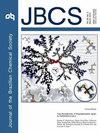2,6-二氯-3-甲基-1,4-苯醌与石墨烯相互作用的理论研究
IF 1.3
4区 化学
Q3 CHEMISTRY, MULTIDISCIPLINARY
引用次数: 0
摘要
人类、动物和野生动物可能因接触环境中存在的有毒物质而遭受后果,例如消毒副产物,即通过氯与水中存在的天然有机物之间的反应形成的光环苯醌。本文基于密度泛函理论,采用从头算方法研究了2,6-二氯-3-甲基-1,4-苯醌与石墨烯层的相互作用。结果表明,2,6-二氯-3-甲基-1,4-苯醌吸附会改变纳米结构的电子性质,这取决于分子吸附位点。计算的结合能表明,当2,6-二氯-甲基-1,4-苯醌分子平行于石墨烯层时,该分子通过化学吸附过程与石墨烯相互作用。我们的研究结果很有希望,因为它们表明石墨烯可以作为水中有毒物质的过滤器。本文章由计算机程序翻译,如有差异,请以英文原文为准。
Theoretical Study of 2,6-Dichloro-3-methyl-1,4-benzoquinone Interacting with Graphene
Humans, animals and wildlife can suffer consequences due to exposure to toxic substances present in the environment, such as disinfection by-products, the halo benzoquinones, which are formed through reactions between chlorine and natural organic matter present in the water. In this paper, the interaction of 2,6-dichloro-3-methyl-1,4-benzoquinone with graphene layer was investigated by ab initio methods based on the density functional theory. The results show that 2,6-dichloro-3-methyl-1,4-benzoquinone adsorption changes the electronic properties of the nanostructure depending on molecule adsorption site. The calculated binding energies show that this molecule interacts with graphene through a chemical adsorption process when the 2,6-dichloro3-methyl-1,4-benzoquinone molecule is parallel to the graphene layer. Our results are promising because they indicate the ability of graphene to serve as a filter for toxic substances present in the water.
求助全文
通过发布文献求助,成功后即可免费获取论文全文。
去求助
来源期刊
CiteScore
2.90
自引率
7.10%
发文量
99
审稿时长
3.4 months
期刊介绍:
The Journal of the Brazilian Chemical Society embraces all aspects of chemistry except education, philosophy and history of chemistry. It is a medium for reporting selected original and significant contributions to new chemical knowledge.

 求助内容:
求助内容: 应助结果提醒方式:
应助结果提醒方式:


